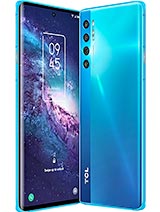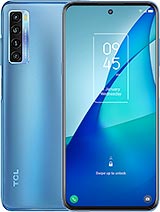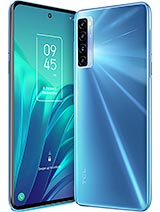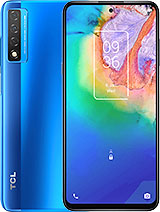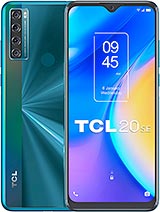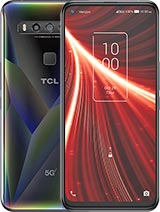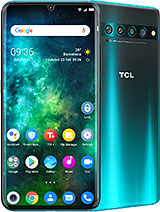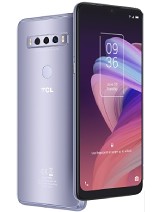Taking apart that one phone... we already forgot existed? By JerryRigEverything
Today we have another phone to tear down. This is one of those phones you probably don't care a whole lot about, and if we're honest, neither of us probably even remember what it's names is. But, here we are in that weird spot between the plague and waiting for aliens to show up. So we might as well just taking this thing apart. Let's get started. Huge thanks for checking out my Not A Wheelchair launch by the way.
We've been working on The Rig for quite a while now, and it's great to see that you guys like it as much as we do. So thank you. Getting inside this... um... what is it called again? Opening up this phone is relatively easy.
There is no IP rating but the glue is still pretty strong. One really long slicearoo around the entire edge of the phone cuts away the adhesive holding the glass to the frame. And lucky for us there are no ribbons or anything else attached to the back glass. It just cuts away and folds open like a book. There is a long row of cameras, a white battery, and no wireless charging.
I'll remove the 18 screws holding down the back plastics. Then I can lift up the top black protection piece which includes the NFC coil. You can see the two little gold square contact pads on the underside. The motherboard itself looks pretty clean. We'll get a closer look at that in just a second.
Down here at the bottom when we take off the black plastics, we can see the little circular coin style vibration motor that comes up with the loudspeaker. The tiny vibrator is a cute little guy and there is no sound dampening foam balls inside the loudspeaker like we've seen on some other flagships. I'll unplug the battery connector just like a little Lego, and then I can use this clear pull tab to lift up the battery. Then I can use this clear pull tab to lift up the battery. Then I can use my metal pry tool to lift up the battery.
It's a pretty sizable 4500 milliamp hour capacity. A bit larger than even my Note 10 Plus. I think Samsung is still playing it a little safe when it comes to battery sizes. I'll remove the two more extension ribbons from the main board, along with the black wire cable, and a screen ribbon. Then the motherboard can pop up completely after I unclip the final infrared ribbon for the top remote control.
Oh yeah, this was the phone made by a TV company. There is an interesting gray little thermal foam pad down here under the board. No copper heat pipe or vapor chamber though. It's interesting that all of the cameras are individual units. Most flagship smartphones have their cameras grouped together in a metal housing so they can't accidentally be bumped out of alignment... since most cameras often work together to create images.
The 16 megapixel wide-angle, two megapixel low-light, 64 megapixel normal camera, and the 5 megapixel macro camera all do not have optical image stabilization. So losing that OIS is definitely one sacrifice that'll be made when buying this cheaper phone. The front facing camera has a 24 megapixel sensor, and also does not have the optical image stabilization. This phone does however have a headphone jack soldered onto the mainboard. Kind of fun.
Functional antiques are always nice to have around. Now it might look like these camera units are free floating, but inside the metal frame where the motherboard sits, there are metal squares for each of these camera units to rest. You can see them right below the little infrared remote control unit that pokes up out of the top of the phone. The bottom of the phone is rather unique. Instead of having the SD card tray be attached to the same circuitboard as the charging port, they are actually separate boards - both of them lightly adhered to the frame, and both just kind of do their own little things.
The USB-C port can charge at 18 watts which isn't super fast anymore in the cellphone world, unless, of course, you own an iPhone. The underscreen fingerprint scanner is optical. Remember that OLED layers are thin enough that light can actually pass through, and the small camera can see and recognize your fingerprint through the screen. Overall this seems to be a well organized phone. Sometimes when companies make a cheaper phone, they skip on the inner organizational aesthetics and repairability.
Like Black Shark, or that Blackview projector phone. But TCL has done a good job with their first phone that's named number 10. Going back to that slow 18 watt battery charging thing. Personally, I think having a battery that lasts all day is more important than having a fast charging battery. I usually charge my phone overnight anyway, and I don't need the quickness as long as my battery lasts all day.
Some studies even show that slower charging increases battery life by a small degree because there is less heat involved. So having a slower charger is not a major complaint for me... as long as the battery itself keeps lasting all day. And there we have it. The phone is assembled, turns on, and everything is still working.
Nice work, TCL. Hopefully we see more feature-rich mid-range phones from them in the future. Competition is a good thing. Important question for you though: would you be nervous about buying a phone from a new brand? Or is the brand recognition or prestige of a smartphone just as important as the functionality? Let me know what you think down in the comments. And come hang out with me on Instagram and Twitter, and thanks a ton for watching.
I'll see you around.
Source : JerryRigEverything

